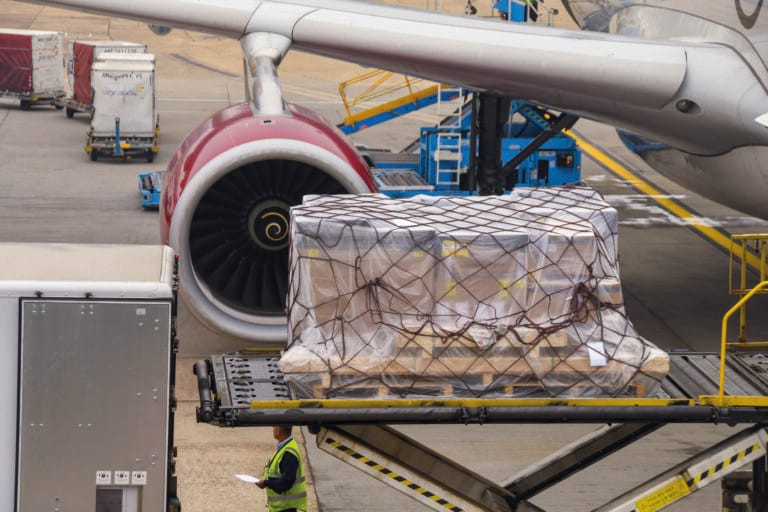Global air cargo spot rates declined for a second consecutive month in June, down -4% year-on-year as supply of capacity overtook demand for the first time in 19 months, and concerns over a more challenging second half of 2025 rose on the back of uncertainty over the prospects for international trade, according to new data from industry analysts Xeneta.
Niall van de Wouw, Xeneta’s Chief Airfreight Officer, called this market performance ‘unsurprising,’ adding that while politicians are continuing to trade economic blows in the form of tariffs, the latest monthly intelligence also signals consumers are ‘voting with their wallets’ and looking to save money on non-essential goods.
Global air cargo volumes were flat in June, up just +1% year-on-year, while available capacity measured over the same period edged up +2%.
“The air cargo market is losing altitude amidst so much uncertainty,” he said. “For consumers who were already under severe financial pressure from the rise in the everyday cost-of-living, the added cost of tariffs means they are more likely to think twice about buying many of the types of goods which are exported and imported by air.”
With tariffs, there are no winners
“When Xeneta reported April’s market data, we asked ‘how bad will it be?’ over the rest of 2025. That’s certainly top of mind now for airlines and forwarders, but also for shippers and consumers. Every economist will tell you that with tariffs there are no winners.
“It’s wrong to think falling air cargo rates on key trade corridors automatically represent a boon for shippers. With weaker consumer confidence, low rates are little comfort when underlying demand is deteriorating,” van de Wouw added.
Pricing tethered to market forces
Air cargo data for June comes against a backdrop of mounting uncertainty. The temporary suspension of new US tariffs is set to expire on 9 July for most countries – and on 13 August for China – clouding forward-looking demand. Simultaneously, a spike in crude oil and jet fuel prices, caused by conflict in the Middle East, has yet to lift freight rates because air cargo pricing remains more tightly tethered to market forces than to input costs, he said.
Compounding this trepidation is a weakening US dollar. As most airfreight contracts are denominated in local currencies, the greenback’s around -5 % depreciation (across several US dollar indices) has diminished the headline decline in dollar-based spot rates.
The global dynamic load factor for air cargo in June reflected the market’s downward trend, falling 2 percentage points year-to-year to 56%. Dynamic load factor is Xeneta’s measurement of capacity utilisation based on volume and weight of cargo flown alongside available capacity.
First half demand still grew +3%
Despite this turbulence, air cargo demand for the first half of 2025 still grew by +3% compared to the same period a year earlier, but the industry is preparing for a less rosy outlook for the remainder of the year given the effects of looming tariffs and curbs on US de minimis exemptions for cross-border e-commerce goods.
“Last month we said sentiment was driving a downturn, but now market fundamentals are starting to kick-in. In this environment, at a certain moment, something’s got to give.
“We are starting to see the longer-term effects of all this uncertainty because a lot of damage has been done. This might be the new reality for the foreseeable future as the industry is facing a much more challenging second half of the year,” Niall van de Wouw commented.
Most airfreight corridors saw a decline in June
Most airfreight corridors recorded year-on-year rate declines in June, underscoring a broad market slowdown. Routes from South-East Asia to both Europe and North America were particularly weak, posting double-digit drops in rates compared with the same period last year when prices had spiked.
In comparison, the North-East Asia to Europe corridor remained relatively steady. A surge in e-commerce volumes helped offset a shift in capacity toward the Asia–Europe market, keeping rates in balance. Backhaul routes from Europe and North America to Asia, however, continued their downward trend, reflecting persistent trade imbalances.
Only a handful of corridors defied the broader pattern. Rates from North-East Asia to North America climbed modestly, driven by jitters over the approaching end of the United States’ 90-day tariff truce. Transatlantic routes also edged higher: both westbound and eastbound spot rates posted single-digit increases year-on-year.
Faced with this uncertain landscape, shippers have adjusted their procurement strategies. The second quarter, typically the peak season for tendering, saw a notable shift. The share of mid-term contracts (three to six months) rose by eight percentage points compared to a year earlier, largely at the expense of annual or longer-term agreements. Yet, compared to the first quarter, the share of three-month contracts declined 12 percentage points, suggesting that some tenders earlier in the year proceeded out of necessity, particularly for shippers who place a premium on service reliability.
Freight forwarders continued their cautious stance in June. Around 46% of their procured volumes remain in the spot market, reflecting a belief that rates may yet fall further. Their wait-and-see approach favours flexibility over long-term commitments – for now.





